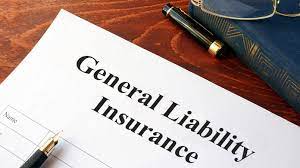A dental insurance verification form is a document used by dental care facilities to seek a patient’s insurance information.
The document should be provided to the patient’s insurer so that they can describe the sort of medical procedure that will be covered by the patient’s plan (preventative, major, periodontal, etc.) and any other policy-related information.
Once received by the insurer, the form must be completed with the patient’s details before being sent to the medical facility.
How to Write

Step 1: Download the dental insurance verification form as a PDF.
Step 2: In “Patient Information,” input the patient’s name, SSN, and birthdate. Next, define the patient’s relationship with the subscriber (the insured individual).
Step 3: In “Subscriber Information,” provide the subscriber’s name, SSN, birthdate, and subscriber ID number.
Step 4: In “Insurance Information,” specify the following facts about the subscriber’s insurance policy:
- Insurance company name
- Insurance company address
- Insurance company phone #
- Subscriber’s employer
- Group #
- Effective date
- Renewal month
- Yearly maximum ($)
- Deductible per individual ($)
- Deductible per family ($)
- Treatment(s) applicable to deductible
Step 5 – Under “Preventative Coverage,” insert the following information about the subscriber’s preventative coverage:
- Percentage of coverage
- Is there a waiting period for preventative coverage?
- Effective date
- Prophylaxis/Exam frequency
- Bitewing frequency
- Fluoride varnish frequency
- Is there an age limit for fluoride varnish applications?
- If so, at what age?
- Is there sealant coverage?
- What teeth are covered? (molars, premolars) Is there an age limit for sealants?
- If so, at what age?
- Replacement for sealants (describe)
Step 6: In “Basic Coverage,” enter the percentage of basic dental work that is covered, and then choose “Yes” or “No” to indicate whether there is a waiting time. Next, state the effective date of basic coverage and define what it entails.
Step 7: In “Major Coverage,” specify the percentage that the insurance plan will pay for any major dental work. Next, indicate whether there is a waiting time for significant coverage and enter its effective date. Finally, specify what types of dental work are covered under the major coverage.
Step 8: In “Periodontal Coverage,” specify the following details:
Does the patient have a history of SRP (D4341/D4342)?
If yes, when?
Is the SRP (D4341/D4342) covered?
The frequency of SRP (D4341/D4342) coverage
Can SRP (D4341/D4342) be conducted on all quadrants during the same visit?
If not, what is the waiting period?
Can an adult prophylaxis and isolates of SRP (D4342) be performed within the same visit?
If not, what is the waiting period?
Is periodontal maintenance (D4910) covered?
frequency of periodontal maintenance (D4910)
Also Read Does Insurance Cover Dupixent? What You Should Know
Step 9: In “Implant Coverage,” answer the questions with “Yes” or “No.” Also, include the coverage percentages for the relevant questions (if applicable). The questions are as follows:
- Are endosteal implants (D6012) covered?
- Are bone replacement grafts (D7953) covered?
- Are guided-tissue regeneration barriers (D4266/D4267) covered?
- Are implant abutments (D6056/D6057) covered?
- Are implant crowns (D6065/D6066/D6067) covered?
- Is a pre-determination required before implant surgery?
Step 10: In “Orthodontic Coverage,” indicate whether or not orthodontics are covered by your insurance plan. If orthodontics are covered, indicate what percentage is covered. Next, state whether there is an age limit for orthodontic coverage (if so, provide the age). Finally, define whether a lifetime maximum exists and, if so, enter it.
Step 11: In “Miscellaneous,” enter the following information in the accessible fields:
- Are nightguards (D9940) covered?
- If yes, what percentage?
- Is nitrous oxide (D9230) covered?
- If yes, what percentage?
- Years before replacements on crowns and bridges
- Years before replacements on partial dentures
- Is prior extraction covered (missing teeth clause)?
Step 12: In “Additional Notes,” submit any information that may help the medical facility handle the claim.
Step 13: Finally, enter the individual’s name and the date they completed the form.
Check Out Humana PPO Insurance Plans: Everything You Should Know
What Is Dental Insurance Verification?
Dental Insurance Verification includes confirming patient insurance status for active coverage, determining dental insurance benefits, and obtaining prior clearance for procedures ranging from cleanings to oral surgery. A patient’s insurance plan consists of four major components, which are the following:
- Deductibles
- Coinsurance
- Copays
- Maximum out-of-pocket (MOOP) expenses
Before a patient’s visit, an insurance verification expert at your dental clinic should contact the patient’s insurance provider to confirm their dental insurance eligibility.
Dental Insurance Verification Process
The dental insurance verification process involves the following steps.
First, the dentist or their patient must gather the essential information to verify dental coverage, which normally includes the patient’s name and the insurance company.
For example, if you’re considering a dental plan for yourself or a family member, you can use an online tool to determine whether your plan covers out-of-pocket expenses.
Next, the dentist should contact their insurance carrier to see if they are a PPO provider.
The next step is to contact your insurance carrier and inquire whether they are a PPO provider. A PPO plan is a form of dental insurance plan that allows you to choose from a variety of providers for your regular check-ups and cleanings, allowing you to obtain the greatest value for your money.
You’ll need to contact the dental practice first, but once you know what type of insurance carrier they are, you can easily find out how much coverage they give!
To begin the dental insurance verification procedure, you will need to provide some personal information to your dentist’s office.
To begin the dental insurance verification process, you will need to provide some information about yourself and your insurance plan. This includes:
- Your name, phone number, address, and email address
- The name and policy number of your dental coverage
- A copy of your insurance card
- The name and address of your dentist or oral surgeon.
This section of the dental billing procedure is complete once you have filled out and submitted your form!
Your dentist or their staff should now contact your insurance provider to obtain information about your dental insurance benefits.
They’ll need to obtain certain crucial data that will allow them to handle payments while also ensuring that you receive the finest possible care.
The first step is for you (the patient) and your dentist or hygienist to discuss the details of your plan and the amount of coverage it provides.
This includes queries concerning whether or not there are yearly benefit restrictions, and, if so, specific ones. What happens if there are no annual limitations but instead per-visit costs or other expenses on occasion—or perhaps simply monthly premiums?
When asked if they have lately filed claims, you will also want to know why these requests were denied. If so, how will this influence future claims made with the same insurer?
While the specifics of this stage of the process will change between insurance carriers, there are a few broad principles that apply to all dental insurance providers.
When you call the insurance company, you will be asked for basic information. The dentist will need to contact them and inquire whether they are a PPO provider.
This means that your dental plan has a network of dentists who accept its coverage and can refer cases directly to one another without going through the administrative process that standard fee-for-service plans need.
The insurance company will want to know the following:
The name of your patient.
Their address, especially where it is located inside their city, state, or country (if applicable),. It’s a good idea to double-check yours and theirs before moving on with this process to avoid surprises later on.
It is critical for both the dentist and their patient to understand what their current dental plan covers in order to avoid a situation in which the patient is unexpectedly charged for a service that is not covered by their plan.
As a consumer, you must understand your rights under each form of insurance coverage and how they function together. The information provided below will help you understand how this works in practice.
It is always better to be safe than sorry when it comes to understanding what is and is not covered by your plan.
When it comes to dental insurance, the only way to know for certain whether your plan covers specific services is to ask your dentist. However, there are numerous reasons why this is not always possible:
Your dentist may be unfamiliar with all of the specifics of your plan’s coverage or their own patients’ insurance. You must ensure that any coverage-related questions are routed to someone who knows what they are talking about!
Conclusion
We hope this information will help you understand how your insurance company verifies dental plans and why it’s essential to be prepared for the process.
Remember that there are other alternatives to dentists and hospitals, so if you want to avoid going through this process, find another dentist!






